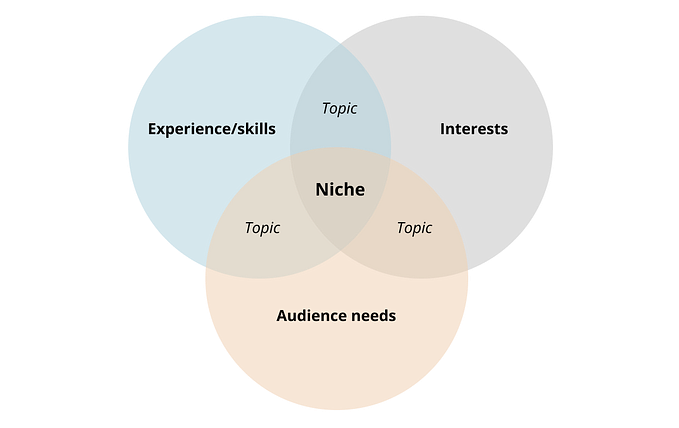The Silent Importance of Microcopy
And how it links Writing with User Experience

“Can you quickly write something?” are likely to be a copywriter’s most-heard words. If you are smirking, you are also one. Or the developer or designer asking. It’s just a text in a button after all, how hard can it be? Well, if successful copywriting were quick and easy, there would be no need for this job. And no urge to write this.
With multiple similar “quick” requests a day, one essential ingredient easily gets lost in the writing process–particularly in a sprint-based digital environment. And that’s time. Time to look beyond a button and view an entire user journey; hence time to provide high-quality and coherent copy.
Words build a brand and carry the power of making it stand out. This requires continuous work and limitless room for improvement. Most importantly, however, the words within any digital product should primarily focus on the user and their experience in regards to smaller segments of texts (e.g. titles, labels, buttons, descriptions, instructions, warnings, notifications and controls) called microcopy.

Human-centred thinking is what differentiates good writing from great. And essentially, what differentiates a good product from a great one. Therefore, it is crucial to make user experience (UX) writing an essential aspect of it. Understanding the value of microcopy is a requirement for a seamless user flow for the average user. A user flow is considered seamless when it does not cause friction (interruptive moments). And hence, provides a satisfactory user experience–which can be achieved by simply often deleting, rarely adding and always improving words.
“Don’t be deceived by the size of microcopy. It can make or break an interface” - Joshua Porter
In 2009, the web designer wrote a blog post with the title Writing Microcopy. In this piece, Porter shared the idea that simply by adding a few words in the right place just at the right time could entirely change usability. Moreover, microcopy is the encouragement before the action, the guiding instructions during these actions as well as the reassurance after the action. With microcopy, an interface cannot solely be limited to functionality. Essentially, words can reduce commitment, build trust, encourage action, and promote relationships.

Contrary to popular belief, microcopy is not about being clever. It must always and primarily be about the user. Now, if you manage to write clear, simple, consistent, instructive, helpful and respectful copy while also creating stylishly clever microcopy that does not neglect the quality of its functionality, then kudos to you! Yet, the writer should never almost selfishly focus on being ‘spicy’ and showing off their word-playing skills. More often than sometimes, it is about what we choose not to do that matters.
With the highly underestimated copy and microcopy carrying much value, if written badly, they can also ruin a great user experience and even a brand all by themselves. However, it is not just the copy that is being underestimated. We all write texts, emails, letters, captions and to-do lists every day. So naturally, this makes us all writers, right? Right?
The above-mentioned copy issue of insufficient time–that can evolve into a business problem–derives from the lack and quality of resources put towards in-house copywriting teams. To any writer (and patiently waiting developer), this is no secret. It’s also no secret to Albie from Accounting, who occasionally writes emails and was therefore asked to join the “copywriting” team. Or to Delia the developer, who needs to write the copy herself as there is no one else to do it. With no to few in-house copywriters–let alone qualified–and/or them needing to put on the hats of multiple different communication jobs on top of theirs, the speed that is needed to fulfil all tasks on time takes the focus of what should matter most; the user. User experience teaches to never fail to ask ‘Why?’. So, why do copywriters from various industries and countries find themselves in similar positions?
Certainly, this resource issue descends from a root not merely linked to financial incentives. Copywriters, or UX writers to be precise, work to make their copy as frictionless–hence unnoticeable–as possible. Therefore, the more invisible the created copy is, the better the UX writers have worked. Consequently, attempting not to be noticed is a great aspect of this job. It is not surprising that justifying the importance of a copywriter’s work is so challenging. After all, when they have done an outstanding job, most will not notice they have done anything at all. Subsequently, copywriters are very often not involved in the design process of a feature. They are also not provided with relevant information by developers and product owners. In fact, copywriters are frequently asked to create written magic without being provided with all information or wireframes–without knowing what exactly they are writing for and how much text space they have available for it. More crucially, they are therefore not aware where the user has been at that exact moment in their journey, and what they know and may need at that time.
Simply and bluntly put, professional writers and their craft are not taken seriously enough. Putting the consideration for writers’ egos aside, this fact is crucial for it being the one that leads to a full circle of issues; with both users and the brand paying the highest price. When time is of the essence, copywriters are asked to close at least one eye on the users’ needs. As a result, the copy starts lacking quality and causes friction within the user experience. Interruptive moments within a user’s journey cause users to suddenly feel hesitant, confused, annoyed, betrayed, outraged, unable, insulted, anxious or highly uncomfortable. Yes, if done badly, copy has the power of raising these and many more negative emotions that will evidently stain the product and/or brand itself. All caused by friction that derives from unclear copy, redundancy, inconsistency, unsatisfactory information, impoliteness and lack of empathy.
On a personal note, from a writer to writers: As the responsible copywriter for an app, I did not hesitate to add more UX to the work process and into my work; I view it as strongly linked with one another. Consequently, a slow-motion domino effect of change occurred.

- By something as simple as asking for the sufficient amount of information and time needed to fulfill a task the way it should always be done–precisely and with the user in mind–requests automatically started to pour in with all the required, detailed information in tow. Additionally, various requests for input and involvement in the early stages of implementing a new feature came knocking. This, unsurprisingly, changes the user journey for the better as it provides the copywriter with the unfamiliar concept of sufficient time.
- While the decision of working with prototypes (within e.g. Sketch) has slightly slowed down my writing process (after investing time to learn how to best use it for the purpose needed), it has also significantly helped make it more successful; based on testing results. This approach provides a detailed overview of the steps the user can take within the entire journey and enables consistency. It also allows to view copy not solely as a source of content and emotion, but also as a source of visual contribution to the design–while trying to find the answer to the question: “If I remove this text element, does it change the experience? How?”.
- The execution of testings such as A/B testing with the exclusive focus on microcopy–e.g. within one user journey of the app–is necessary. Copy, after all, is merely a hypothesis until it is validated by the actual users of the digital platform. In the survey part of one of the testings I have conducted, one question received unanimous agreement among all interviewees:
100% generally do not read texts and instructions. Not exactly music to a writer’s ears. And yet, this answer cannot be declared as valid given that most words in our everyday lives are scanned by us without us feeling like we are actually reading. Primarily, this response underlines the fact that once someone is familiar with a text (e.g. after using a journey once) or with the procedure (e.g. of said journey) in general, only copy that causes friction is consciously noted. And only then, so is the silent importance of microcopy.
If you have skipped to the end, here is what you have missed:







